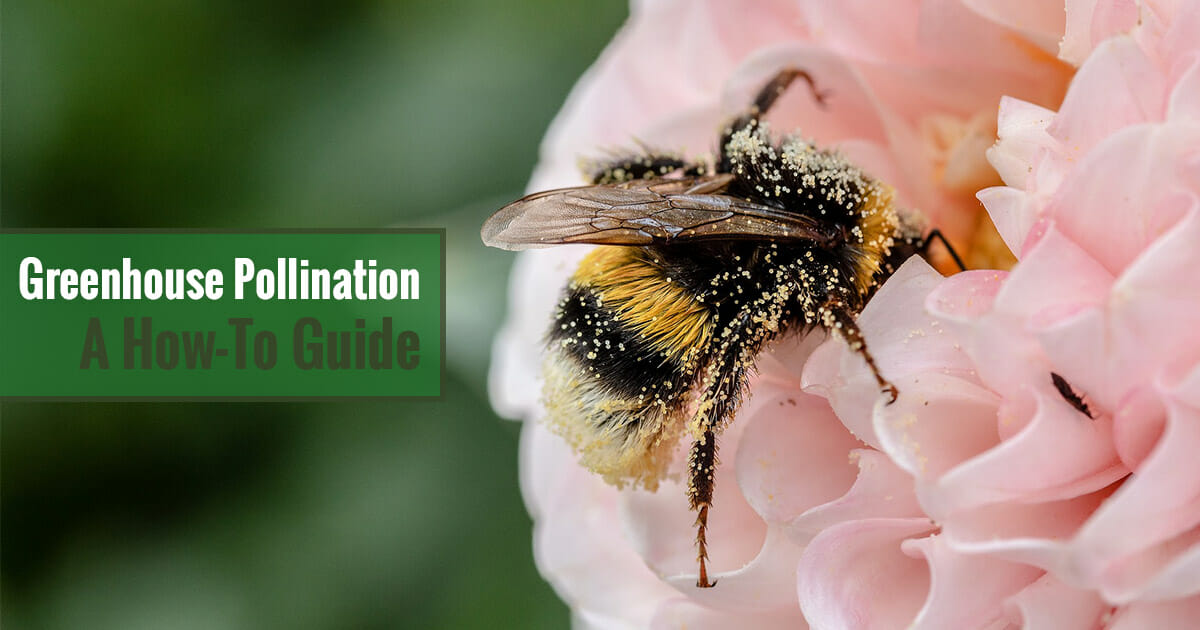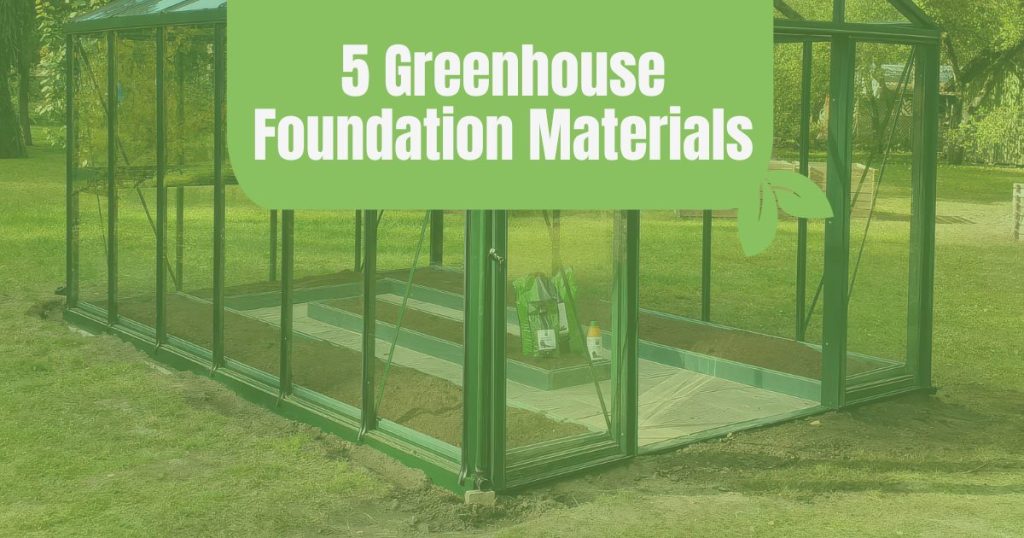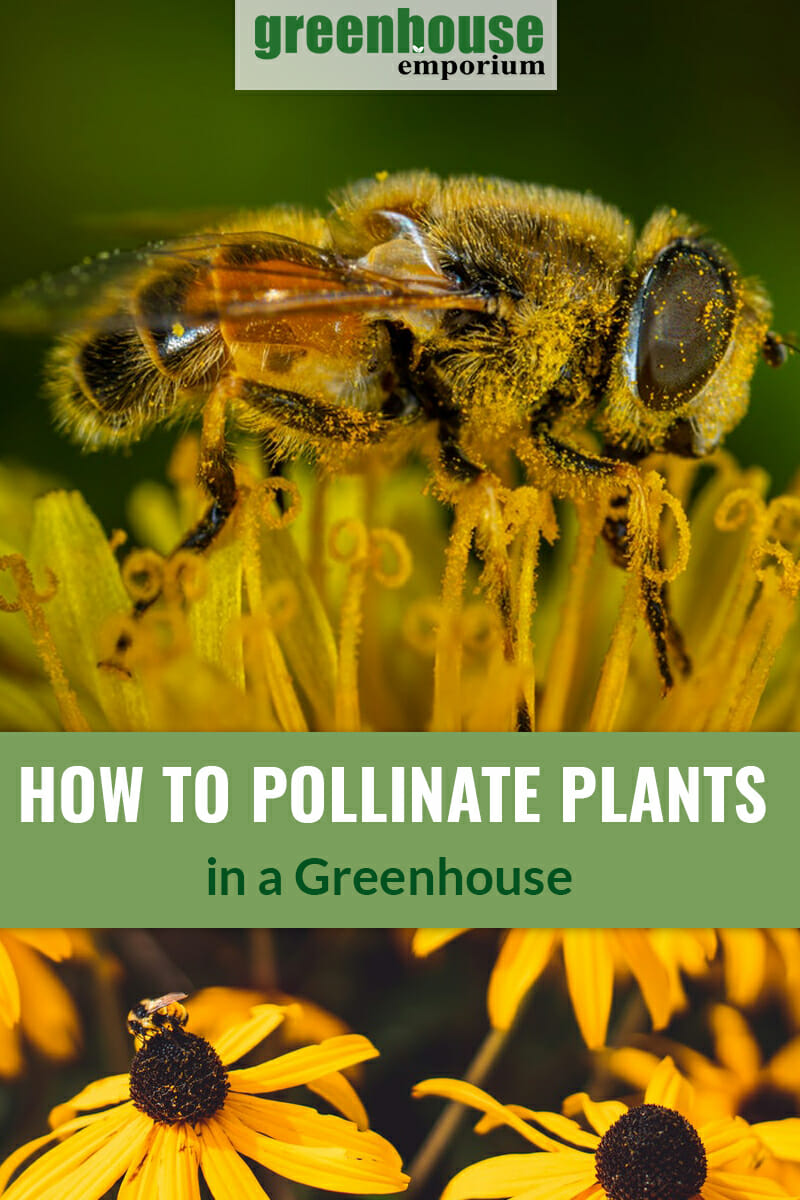
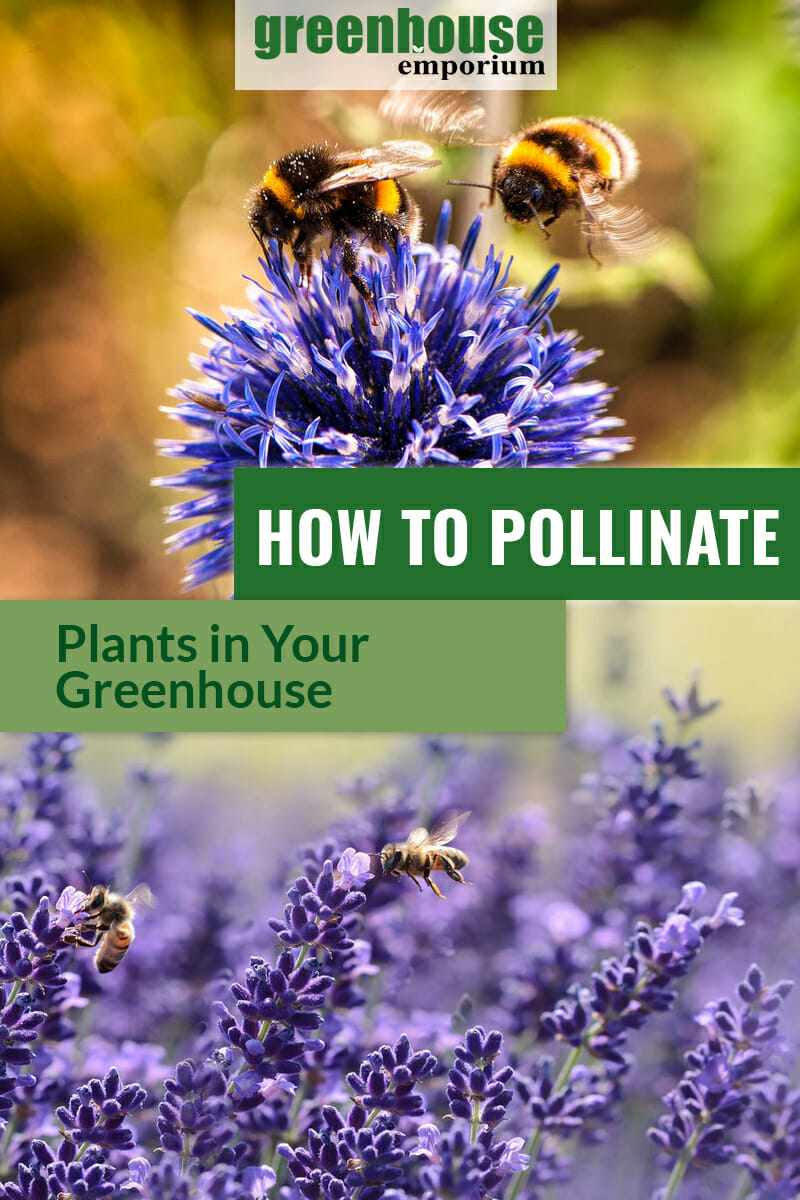
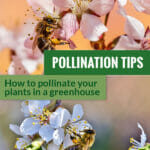
Do you love how the controlled environment of a greenhouse allows you to outsmart the growing season and grow beautiful plants even when it’s too cold outside? Greenhouses are every gardener’s dream because they allow you some control over the climate and reduce the risks associated with the outside environment–including pests, disease, and extreme weather.
While the greenhouse is undoubtedly a great way to extend your growing possibilities, one of its weaknesses is pollination. Because you’re effectively shutting the door on nature, the presence of natural pollinators is greatly reduced, and your yields may suffer as a result. Luckily, there are many ways to ensure successful pollination of plants in your greenhouse: you can simply open the doors or windows to enable pollination by wind and insects, you can hand pollinate using a variety of tools, and you can even release insects into your greenhouse.
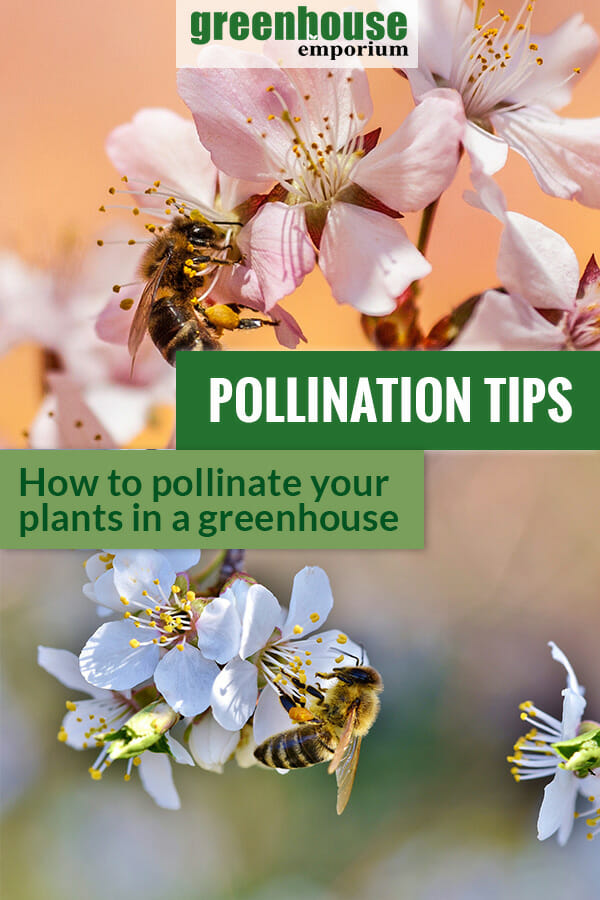
So, don’t quit your dreams of having a beautiful, productive greenhouse! Instead, learn how to pollinate plants in your greenhouse by reading this article, then go out there and apply the recommended methods. Before you know it, your yields will increase like never before!
What is the pollination process?
Just like humans and other animals, plants want to reproduce, or create offspring for the next generation. Pollination is the way that plants are able to do this. In short, during the act of pollination, pollen grains are transferred from the male part of a flower, called the anther, to the female flower parts, called the stigma.
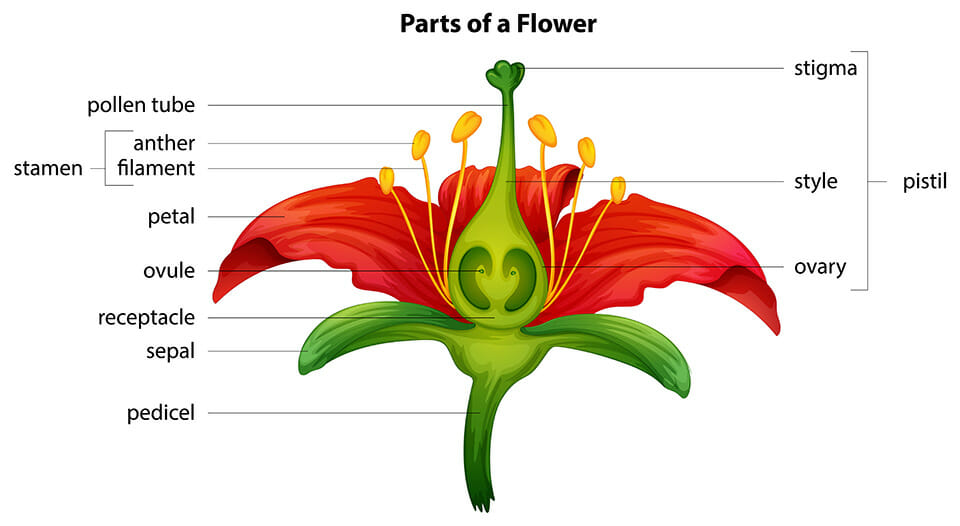
Pollination can occur in a variety of ways, but it is usually aided by other species, including birds, insects, bats, and other animals. Other ways that can aid pollination include wind and water. So you can see why pollination would be more challenging in a greenhouse, especially if the doors and windows are always closed.
What plants do not need pollination?
Although most of the world’s plants are flowering plants, meaning that they produce flowers and seeds to reproduce, there are some plants that don’t need to flower in order to reproduce. Some non-flowering plants include ferns, mosses, lichens, and horsetails. However, these are not the kinds of plants you’ll likely be growing in your greenhouse.
That said, there are some flowering plants that are grown not for their seeds or fruit, but their leaves, stems, bulbs, or roots. These are the kinds of plants that don’t require pollination, because you’ll likely be harvesting them before the plant even has a chance to reproduce.
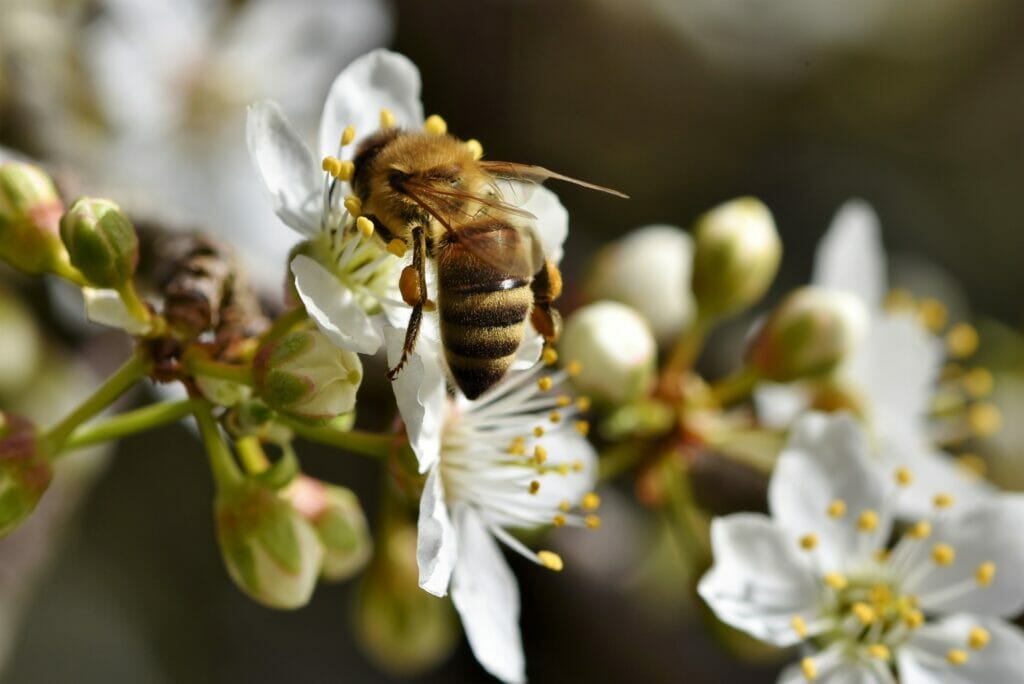
Think about it for a moment: what kinds of plants do you harvest for their leaves, stems, bulbs, or roots? Here are some common examples:
- Lettuce, kale, and other leafy greens
- Cabbage
- Brussel sprouts
- Onion
- Garlic
- Potato & sweet potato
- Beet
- Turnip
- Parsnip
- Radish
- Celery and celeriac
- Ginger and turmeric
- Herbs like rosemary and basil
In some cases, we harvest the flowering part of a plant before it has finished developing. For example, did you know that broccoli is just lots of flowers clumped together? Other examples of vegetables that are technically flowers include cauliflower and asparagus.
What plants do need pollination?
All plants that are grown for their fruits or seeds need pollination. Think about what kind of plants you are growing (or want to grow) in your greenhouse: are you hoping to harvest any fruits or seeds? If so, you’ll want to make sure that pollination can occur. For example, common plants grown for their fruits or seeds include tomatoes, peppers, beans, peas, rice, wheat, sunflowers, and citrus fruits, amongst others.
Types of pollination
In nature, pollination primarily occurs in one of two ways: through self-pollination or cross-pollination. Understanding these two types of pollination will help you when it comes time to pollinate the plants in your greenhouse.
What is self-pollination?
Some plants are able to self-pollinate. That means that all of the plant’s individual flowers contain both the female parts and the male parts required to reproduce. In other words, the transfer of pollen happens within the same flower. These types of flowers are referred to as perfect flowers.
Self-pollinating plants still need some help from nature or from you to make sure that enough pollen grains find their way into the ovule for successful pollination. Usually, some kind of vibration is all it takes; either from the wind, a fan, an air blower, or a gentle tapping or shaking by you.
Although self-pollination makes it easier for greenhouse growers to make sure that plants get the pollination they need to produce fruit, it is not preferable in nature because it leads to less genetic diversity.
Which plants self-pollinate?
A lot of common garden plants are actually self-pollinating and require minimal help from you or other pollinators:
Other plants are technically self-pollinating, but need a helping hand from wind or pollinators to ensure proper pollination:
- Strawberry (wind or pollinator)
- Raspberry (pollinator)
- Blackberry (pollinator)
- Wheat (wind)
- Oat (wind)
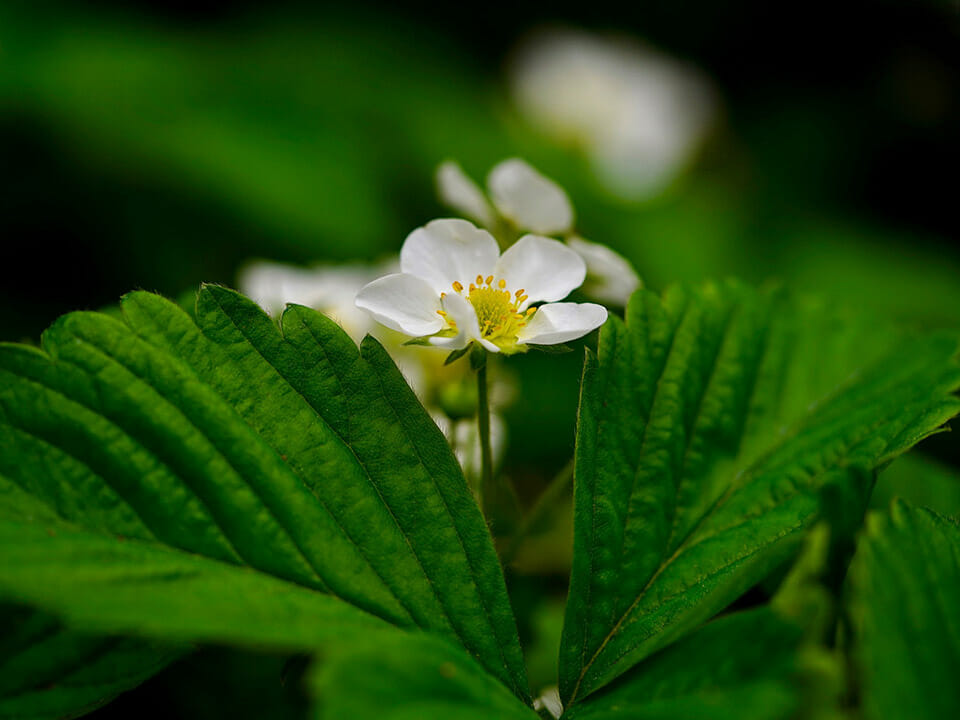
What is cross-pollination?
Unlike self-pollinating plants, cross-pollinating plants contain separate male and female flowers. Somehow, the pollen grains have to get from the male flower to the female flower. Although some plants have lightweight pollen easily transferred by the wind (such as corn) others have heavy or sticky pollen that needs to be physically moved around to different flowers.
This is where pollinators such as bees, butterflies, hummingbirds, and bats come into play. For example, bees collect nectar and pollen from the stamen, eventually returning to the hive to deposit their load. In the process, however, bees visit many different flowers, and every time that they land on a new female flower, some of the pollen rubs off on the stigma, while every time they land on a new male flower, they pick up some new pollen. This is how bees have become known as one of the most important pollinators.
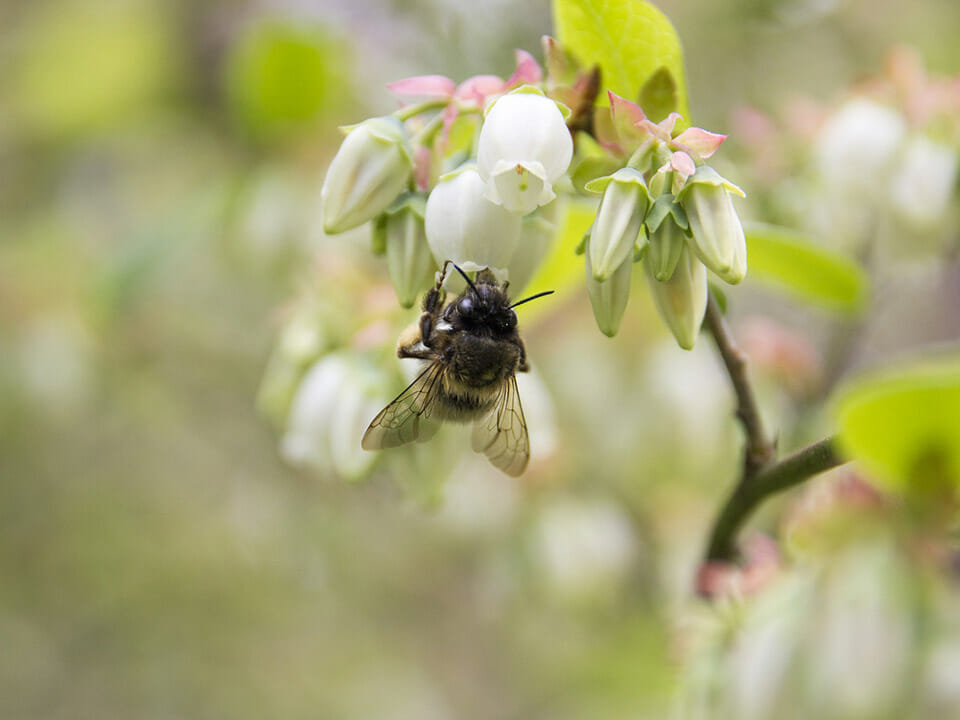
But bees are not the only ones that play a part in the pollination process. Other insects, bats, and birds can transfer pollen grains when they visit flowers.
Which cross-pollinating plants need pollinators?
Commonly-grown plants that need help from pollinators include:
- Blueberry
- Blackberry
- Watermelon
- Zucchini
- Pumpkin
- Cucumber
- Apple
- Pear
- Plum
- Sweet cherry
- Mulberry
How do you pollinate plants in a greenhouse?
Now that you know all about the different ways in which pollination occurs, you might be wondering how you can make it happen inside your very own greenhouse. Already, just knowing about pollination will help you determine the kind of help that your greenhouse plants need from you or other pollinators. Let’s take a closer look at the ways in which you can pollinate inside your greenhouse:
Improve airflow
The first step you should take to improve pollination inside your greenhouse, no matter which plant species you’re growing, is to improve the airflow. Not only is good airflow crucial for self-pollinating plants, who benefit from the vibration produced by a gentle breeze, good airflow also keeps your greenhouse crops healthy by preventing mold and other diseases from developing.
To improve your greenhouse’s airflow, make sure you open up vents and doors (preferably barn-style doors) during the day to create air circulation. This has the added benefit of allowing insect pollination. To increase the airflow in your greenhouse, you can install a fan or exhaust system.
Invite natural pollinators
The next easiest step you can take to facilitate greenhouse pollination is to invite in the natural pollinators and allow them to do all the hard work for you! Simply open up vents, windows, or doors during the day to allow them entry. To make the greenhouse a more inviting place for pollinators, plant flowers nearby and inside your greenhouse!
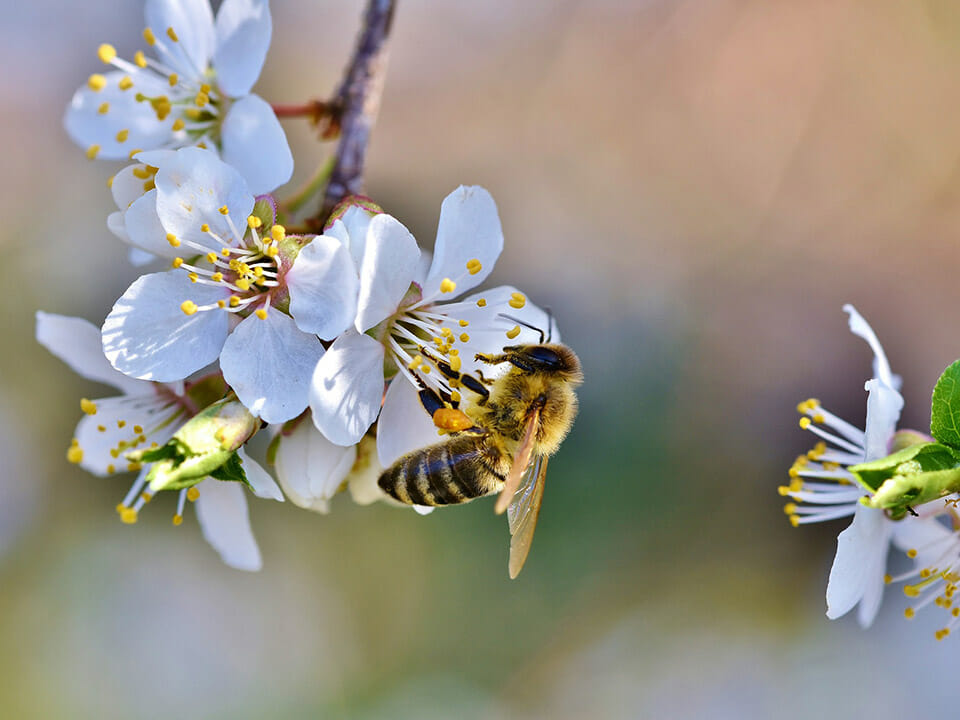
Release insects
There are times when opening up your greenhouse to allow in the natural pollinators is not an option; maybe you’re trying to grow tomato plants in the dead of winter, and it’s too cold outside. Or maybe you don’t want to risk disease spreading from the outdoor garden into your greenhouse. In these cases, you might benefit from purchasing natural pollinators such as bumble bees, mason bees, or Alfalfa Leafcutter bees into your greenhouse.
Check if there are any local insect breeders near you. If not, your local garden supply center may sell insects. Lastly, you can even order them online!
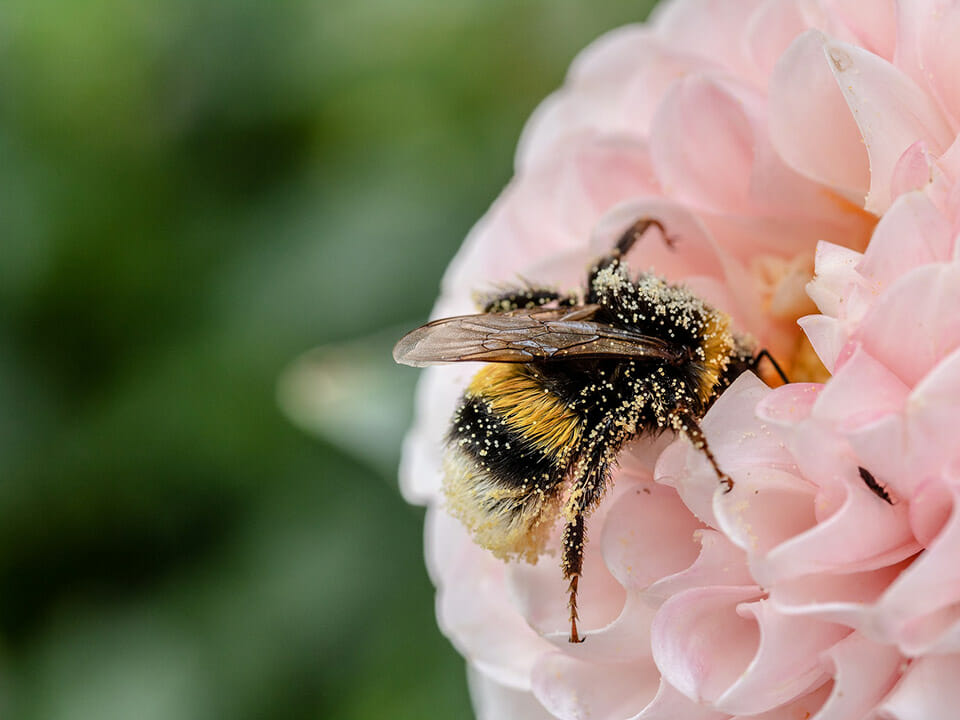
Pollinate manually
If your plants are struggling with fruit production, it could be a sign that they are not receiving adequate pollination. If you’ve already tried the above methods, and your plants are still not producing as they should, you might need to resort to manual pollination to ensure a good fruit set. There are several ways that you can do so.
To manually pollinate self-pollinating plants, you simply need to move pollen grains from the male part of the flower to the female part of the flower. You can do this by gently shaking the flowers, being careful not to break the stem. You can also take a small paintbrush to gently move the pollen around inside the flower.
For other types of plants, you’ll need to move the pollen grains from the male flower to the female flower, which requires being able to identify which flower is which. In squash plants, for example, the male flower is the one that sticks out on a thin stem, while the female flower is the one closer to the main stem, with a small squash bud at the base.
To manually pollinate these plants, take a soft brush and plate or spoon. Gently touch the blossom while holding the plate underneath in order to catch the pollen. You can also use the back of an electric toothbrush to imitate the vibrations of an insect. This method can take some time if you have a lot of plants that need to be pollinated. Nevertheless, manual pollination is very useful in improving pollination inside the greenhouse or indoors, where natural pollination cannot occur.
While hand pollination can replace natural pollination in a greenhouse, it is worth noting that it requires time and effort. In a small greenhouse, or with just a few plants, this shouldn’t be a problem. But if you have a large greenhouse, you might consider other ways to improve pollination in your greenhouse, such as adding fans or releasing beneficial insects inside your greenhouse.
Use a pollination device
If you want a more high-tech method of improving pollination in your greenhouse, you might consider getting a pollination device. These devices can help you overcome low crop yields indoors and in the greenhouse, without having to deal with insects.

Pollination devices are designed to spread pollen to other areas of the flower to ensure effective pollination. But before using these pollinating devices, make sure that you know whether the plant is self-pollinating or cross-pollinating.
If you are considering device pollination, we recommend the VegiBee Garden Pollinator. This device pollinator imitates the high-frequency vibration created by insects during pollination. In fact, it creates 29,000 to 44,000 sonic vibrations per minute! The VegiBee Garden Pollinator is great for peppers, beans, peas, eggplants, strawberries, and tomatoes.

